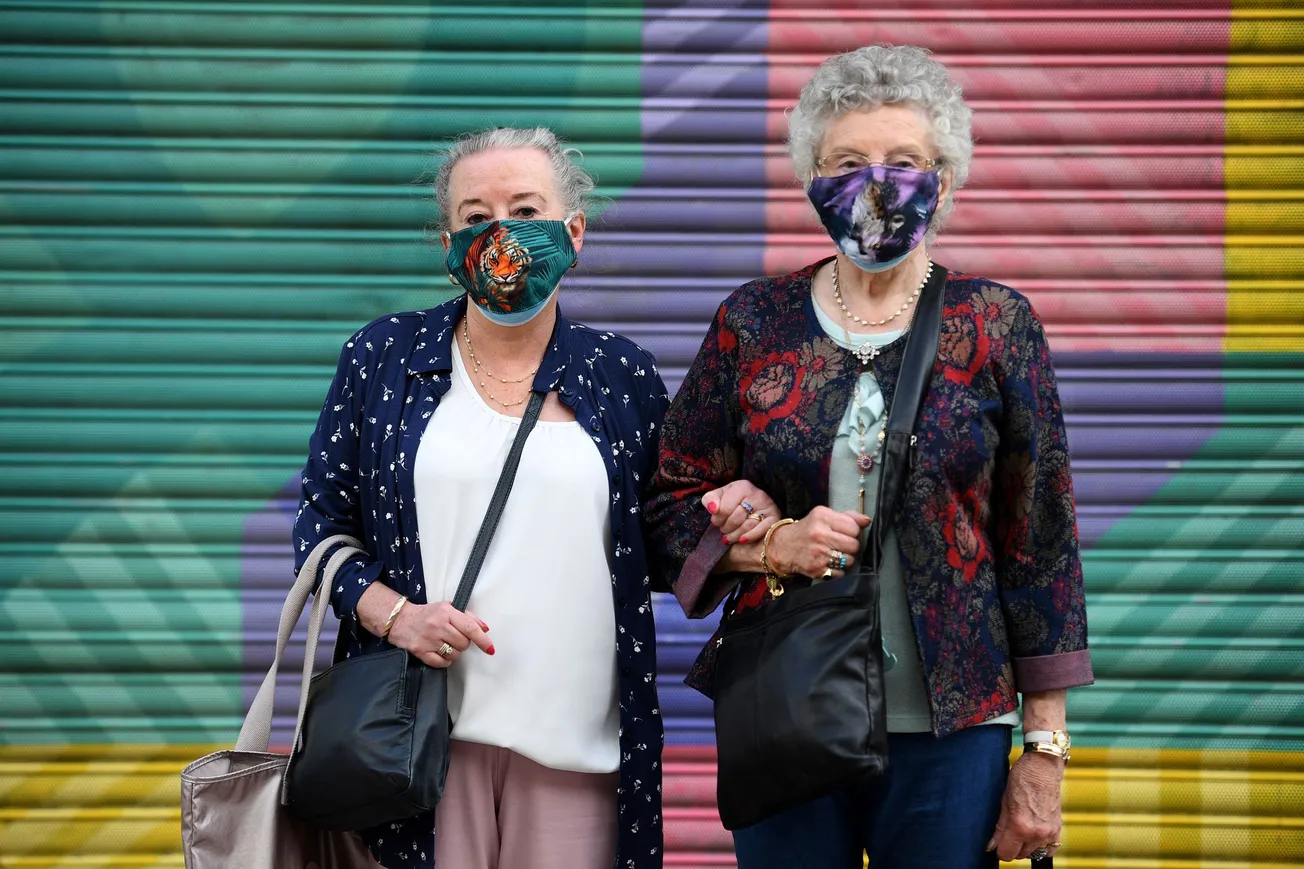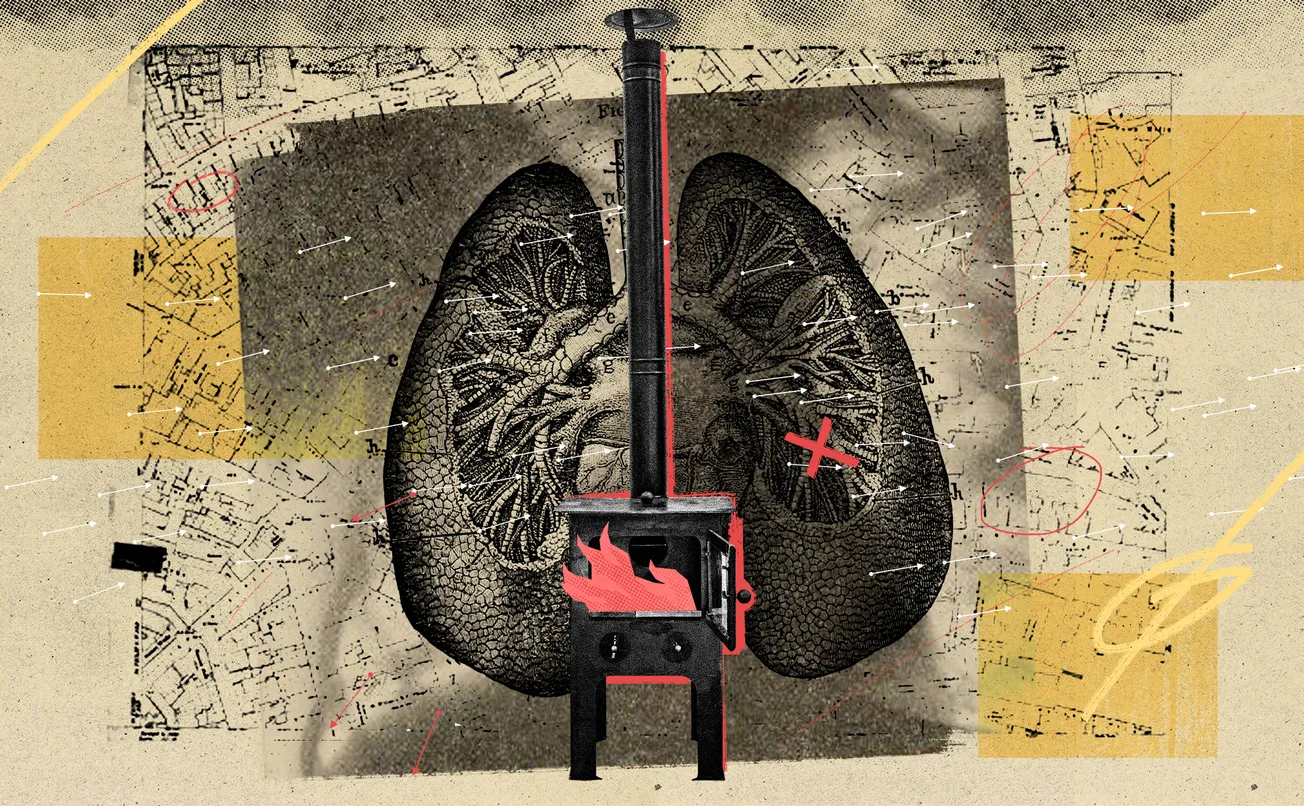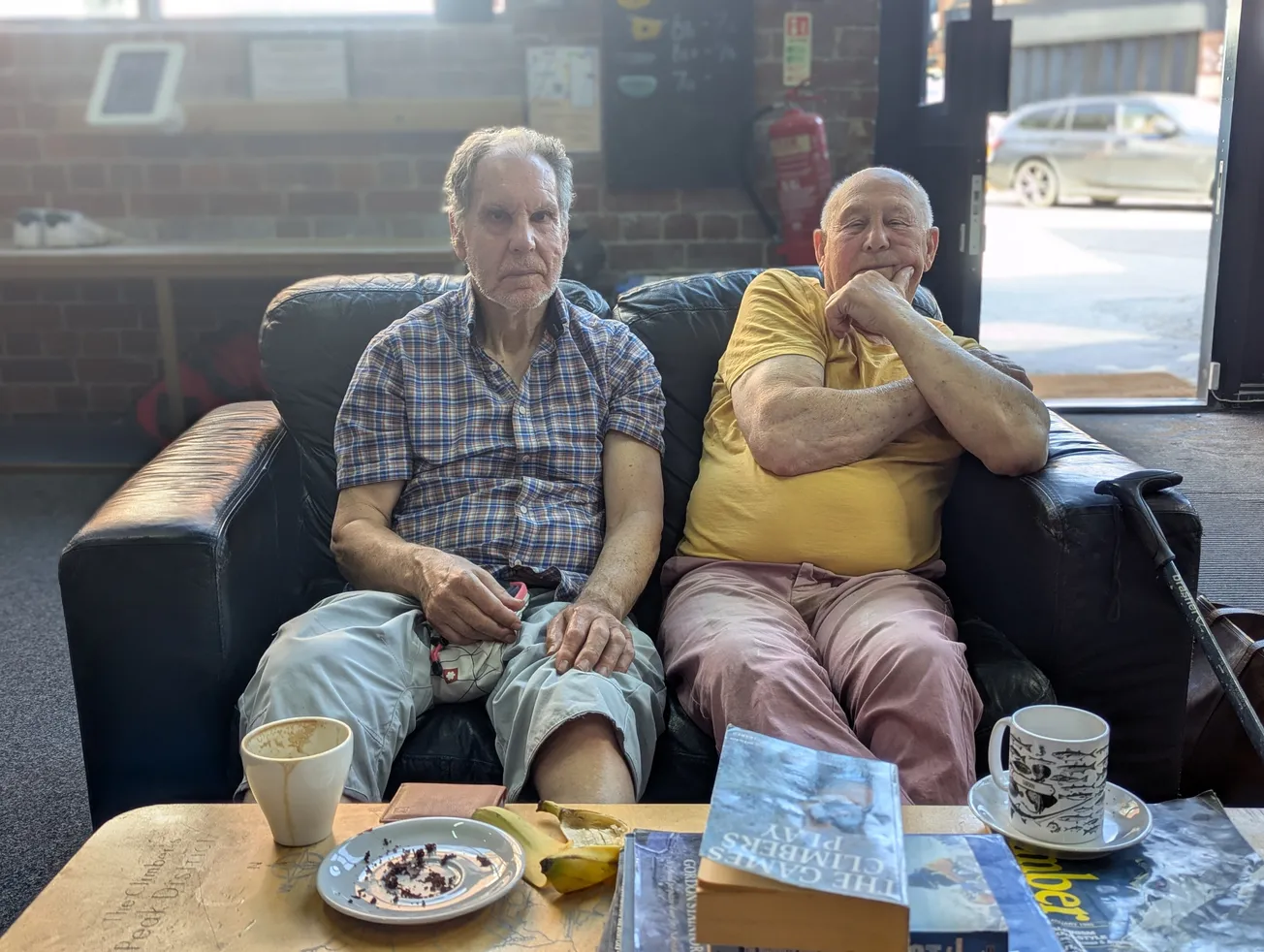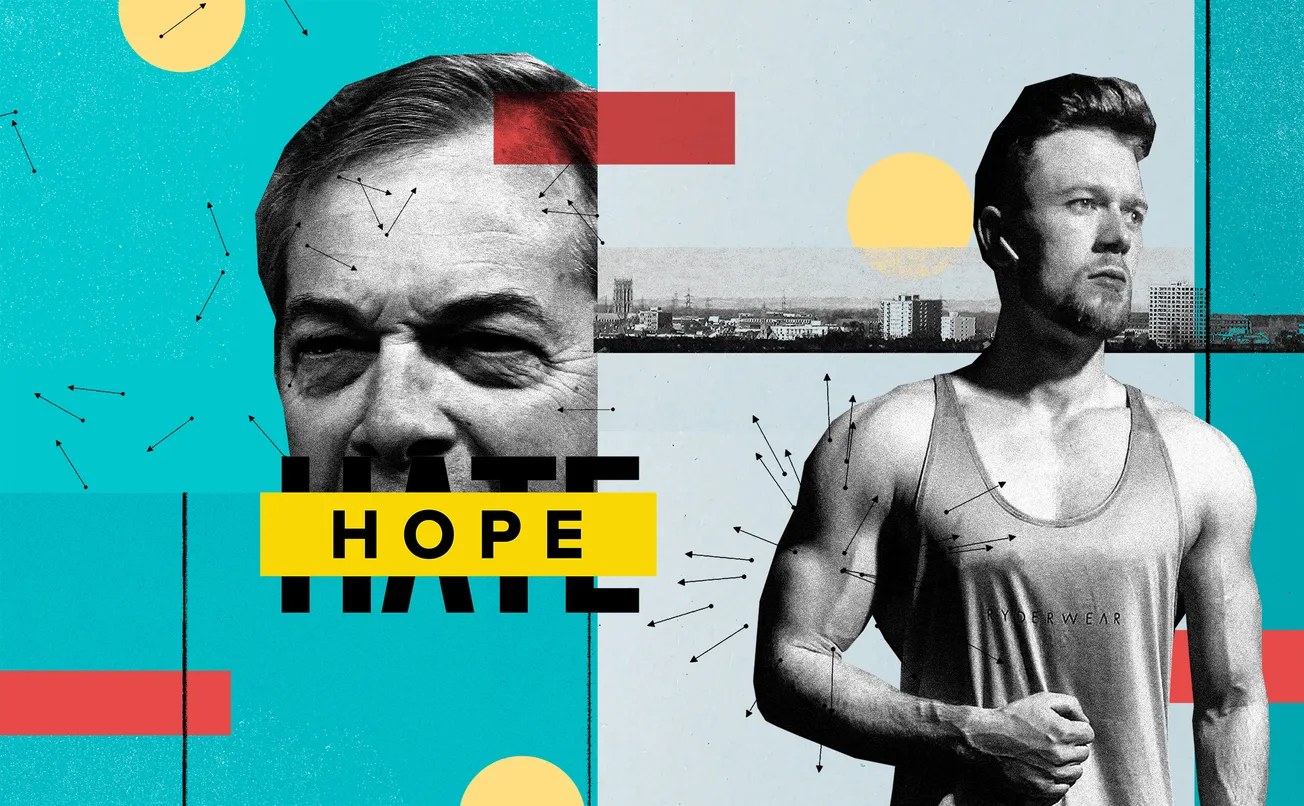“I promised myself when I retired, I wouldn’t do any more public health – I’d do other things,” says Paul Redgrave, a former GP and director of Public Health in Sheffield, with a touch of wistfulness. A genial, grey-haired 72 year old, he breaks off our conversation at one point in absolute delight at spotting a woodpecker out the window – bird-watching being just the sort of “other thing” retirement is designed for.
And yet in 2020, nine years after resigning from his job, Redgrave felt compelled to break his own promise to himself – getting thoroughly sucked back into the greatest public health crisis of his lifetime.
He wasn’t the only one: in the face of the Covid-19 pandemic – and the British government’s woeful response – a group of volunteers in Sheffield rolled up their sleeves and got stuck in. According to the Sheffield Community Contact Tracers, they proved that there was another way to respond that could have saved countless lives: robust, volunteer-led local contact tracing.
It began with fretting, Redgrave admits. After a lifetime of working in public health, he couldn’t just turn off his interest in the field – or quieten his fears, as he watched the clouds of a global pandemic gathering on the horizon. From January 2020, he was avidly following the news from China with a growing sense of disquiet – “it didn’t sound good”, he recalls, hindsight allowing for wry understatement.
He began to have increasingly worried conversations with fellow former GPs and Public Health bods. But it was when contact tracing, initially run by Public Health England, was dropped as a strategy on 12 March 2020, that they all began to really panic.
Contact tracing is something Public Health officials have plenty of experience in, whether that’s tracking an outbreak of food poisoning following a wedding to strategizing how to contain deadly contagious diseases. Redgrave once spent an anxious weekend in 2004 preparing for a suspected SARS outbreak in Sheffield: three people had been admitted to the Hallamshire with respiratory symptoms; having recently arrived from Asia, the alarm was raised that they might just have SARS. Luckily, their tests came back negative, but not before Redgrave and his colleagues put together an emergency plan to try to contain an outbreak.

Monitoring who might have passed a virus to who – and getting them all to isolate – is a fundamental tool for stopping an epidemic spreading. Remember the endless talk by politicians during lockdown about the need to “get the R number down”? With the R number referring to the number of people an infected individual will pass the virus onto, on average. A study in Taiwan showed that contact tracing and quarantining reduced the R number there from 2.5 to 1.53 during Covid – proving a significant tool for reducing the spread of the virus.
And yet in the UK, the government suspended contact tracing in the first wave of Covid-19 – an insane choice, as far as Redgrave and his fellow former colleagues were concerned. “Every Public Health bone in my body was saying this is not right,” recalls Redgrave. Even four years on, I can hear the pure disbelief in the voice of this otherwise mild-mannered and generally cheerful man.
Redgrave was so baffled, he contacted a senior operator for Public Health England, to say that surely they should be continuing with contact tracing. “He emailed back saying, ‘of course you’re right – but you can speak out, I can’t'. Then he said: ‘for goodness sake Paul, you guys know about contract tracing – just do some!’”
And so they did. The retirees swiftly organised themselves into Sheffield Community Contact Tracers (SCCT), got on the phone to the volunteer and community hub Heeley Trust, and to the relevant GPs (“old mates of ours”), and started their own, hyper-local contact tracing trial in Heeley and Meersbrook. The results were so promising, the SCCT gained support from places like the British Medical Journal and have submitted a report on their findings to the Covid Inquiry.
The contact tracing worked like this: when GPs heard from people sick with Covid, they would ask for permission for SCCT to contact them. Volunteers would then call that person, find out who they’d been in contact with, and then call them to strongly recommend they also isolate themselves for 14 days. They’d then keep ringing back daily, to see how confirmed cases were faring – did they need additional help and support, say, grocery or medicine deliveries? Did they need more serious medical care? – and to see if those isolating had yet come down with it. If they couldn’t get hold of the contacts on the phone, they might even go round and knock on a door (maintaining a safe distance) or post a letter, to make sure the message about the importance of isolating got through – an example of “shoe-leather epidemiology”, Redgrave explains, where you mobilise local people to go door-to-door alongside more technologically advanced approaches like using smartphone apps.
Still, it wasn’t a radical or “off the wall” plan, Redgrave insists: they were just following best practice. “You Google it – it’s really straightforward, anyone can do it! – and there are really good World Health Organisation and European Centre for Disease Control guidelines for contact tracing. We just followed those.”

SCCT were able to draw on their own networks of experts to lead online training, reckoning that they could get inexperienced volunteers up to scratch in just two two-hour sessions. “We had ever such good volunteers,” recalls Redgrave. “If you supported people, they learned on the job. Lots of it was common sense.”
It all seemed promising – but there were significant challenges, too. While official government advice in Spring 2020 was to isolate for 14 days if you had close contact with someone with Covid, it was guidance only – there were no legal powers to enforce it, and many people chose to ignore it. The volunteers often found it tricky to persuade people to take two weeks off when they were symptomless, with their employers frequently being the issue, not wanting to lose staff.
“Some employers were fantastic, but other people were absolutely appalling,” says Redgrave. “We did our best, as small-time operators, trying to use persuasion. But we were on a hiding to nothing quite a lot of the time.”
One of the worst offenders, ironically, was the NHS. SCCT realised that, while staff at a major Sheffield hospital were wearing the appropriate PPE when working on the wards, they were taking it off in their staff rooms. SCCT contacted everyone who’d been sharing a table with a woman who’d come down with Covid to recommend they isolate for two weeks. But management at the hospital wouldn’t allow it, fearing staff shortages. This was just one of several incidents across Sheffield Teaching Hospitals where management advised staff against following the guidance on isolating.
The SCCT also soon found themselves under attack. The perceived meddling of retired medical professionals, doing their own contact tracing in defiance of government plans and winning praise in the media for it, perhaps unsurprisingly got various backs up.
“The whole time we informed the local Public Health exactly what we were doing, anything we did we sent to Greg Fell [Director of Public Health in Sheffield],” claims Redgrave. “But he got very cross with us, because the Department of Health were cross with us for confusing people… Greg even had a phone call from someone in Cabinet, saying ‘get this lot into line’.”

It felt like their genuine attempts to help were swatted away, as if they were just making things worse. “We were dismissed,” Redgrave says, still sounding rueful about this perceived injustice.
In the end, the pushback SCCT were getting for “muddying the waters” saw them stop the contact tracing pilot at the end of May 2020. By that time, the government had come back around to the importance of contact tracing, with the new national NHS Test and Trace service on the horizon.
“People were getting increasingly cross with us, and saying we are getting Test and Trace, the government has done a U-turn, and it’s just not appropriate to have two [tracing schemes] going at the same time,” Redgrave recalls. “And we were exhausted as well.”
SCCT had some faith that Test and Trace, despite being outsourced to private contractors, would be at least “partially successful”, says Redgrave – but it was another mismanaged disappointment. It proved to be eye-wateringly expensive – costing £37 billion – and woefully ineffectual. A Parliamentary Public Accounts Committee report from 2021 found that “despite the unimaginable resources thrown at this project, Test and Trace cannot point to a measurable difference to the progress of the pandemic”.
Even if the SCCT were out of the contact tracing game, its members were not quite back in retirement. The focus became delivering advice on managing the virus – from communicating why meeting outdoors was essential (because the virus was airborne) to signposting where people could pick up testing kits locally to countering myths around the virus (that it was spread by 5G) or about the vaccines (that they were killing people). The hope was to counter the doubt and distrust that much of the public increasingly felt towards official government guidance, and the wide-spread disinformation online. SCCT ran regular online ‘Covid Confidence Clinics’ workshops and zoom webinars – their largest drew a crowd of 350 people – and social media was vital too. At one point, they were getting 70,000 hits a month on their Facebook page.
But the real key to getting good messaging out – whether that was about mask-wearing, isolating, or the need for vaccines – was building communication between SCCT and community leaders, who could then disseminate the information in their networks. “If you treat people like grown-ups and explain, they will understand. It’s not hard,” says Redgrave. “But it’s exactly the opposite of the government’s ‘we will tell you what to do’, centralised system…we knew that wasn’t going to work.”

According to SCCT, the most “significant challenge” facing the city of Sheffield, in particular, related to its sizable population of marginalised people, from ethnic minority backgrounds — often designated by Sheffield City Council or the NHS as ‘hard to reach’ groups. These communities were particularly vulnerable to the spread of viral disease due to factors such as crowded living conditions, a high incidence of long-term health conditions and working in low paid employment without job security, making it virtually impossible to isolate and prevent the spread of Covid-19 within their community.
To counter this fault-line in Sheffield’s Covid-response, SCCT knew that working with community leaders would be especially important to make sure the best information reached the people in the city who needed it most – that is, the so-called ‘hard to reach’ Black, Asian, minority ethnic and refugee (BAMER) communities in the city. “We knew that the levels of trust were even lower amongst those groups,” says Redgrave, but with many SCCT members having worked in Sheffield for many years, as local GPs or within community organisations themselves, they were able to build on existing relationships – partnering with groups such as Darnall Well Being in the east of the city, Heeley Trust in the south, and the Hadfield Institute in the northeast.
SCCT ran Covid Confidence workshops to deliver up-to-date advice and answer questions in targeted neighbourhoods – Burngreave and Firvale, Darnall and Tinsley, and Sharrow and Nether Edge. These districts were identified as those with areas of high deprivation, where 18-22 per cent do not have English as their main language and 18-27 per cent are in overcrowded housing (in contrast to the national average of 8.7 per cent).
And to be effective, SCCT also recognised that the conversations with those community leaders had to be two-way, instead of top-down. “Rather than us saying ‘thou shalt do just what Boris Johnson says’, we could say: ‘what are the issues for you?’” says Redgrave.
I meet Muna Taha from the Hadfield Institute at her allotment, and over several cups of her Yemeni coffee, she tells the story from the other side. The Hadfield Institute offers support and training for disadvantaged communities; during Covid, they ran an advice line and distributed food parcels to over 3,400 people.
Her attitude towards the government’s pandemic preparedness and their communication during the crisis is, to put it mildly, unimpressed. “You’ve got a government that’s providing you with different information every day – and not sticking to it, someone wanting to do eye tests in the countryside! We weren’t able to trust Boris Johnson and, I mean, the health minister – do I need to say anything else?” She laughs at the mere memory of Matt Hancock. “Our communities were not listening to them.”

Luckily, Taha knew that the people the Hadfield Institute serves – including Yemeni, Pakistani, Roma, Slovak, refugee, and white working-class communities – would listen to her and her volunteers. “We have a long history of relationships, so we could hit the ground running – ‘oh it’s Muna, she will not tell us something she would not do…’”
Taha recalls how, during the vaccine roll-out, people were coming to her with their doubts and suspicions – saying that they’d heard the vaccine could affect their fertility, or that it could kill you if you had diabetes. Even that, as Muslims, they couldn’t have it because it had alcohol in it.
“I’d say, ‘oh I’ve had the injection – but I’m not telling you you have to have it…’” she says, recognising that reassurance and leading by example worked better than bossily telling people what to do. Keeping things light, and having “a bit of banter” helped too: “I’d say ‘wouldn’t you want to see my pretty mug here from time to time – or do you want me to get sick?’”
For her, the SCCT became a vital source of information. “They really did communicate with our community in a way I felt the government didn’t. They were giving us information we could trust, and we were sharing it,” says Taha. And getting the right information out in hard-to-reach BAMER communities was quite literally a matter of life or death during the pandemic. Black people were four times more likely to die of Covid than white people in the UK, according to the ONS. For Taha, the pandemic laid bare the glaring racial inequalities that have long existed in Britain – and within Sheffield, in particular.
“We were already struggling,” she says, having to break off just a few minutes into our interview to wipe away her tears, when speaking of the many people in her community who died from Covid, and who might have survived if they had they had better advice, better health provision, and better living standards, before and during the pandemic. Taha struggles to get the words out: “I think a lot of people like us are still traumatised, you know… Covid unveiled what was going on. It unveiled the imbalance.”
From underlying poor health, to overcrowded housing, to zero-hour contract jobs that provided zero support if you had to isolate, the pandemic exposed clusters of factors that put disadvantaged communities in the city at greater risk. So why weren’t local community organisations used more, Taha wonders, to provide targeted support to the people who needed it, from the people they trusted?

This is the big question for Redgrave and the SCCT too: why didn’t the government’s Covid response make more use of local networks? There is a continual bewilderment that this public health crisis was managed by centralised government handing out chunky private enterprise contracts, rather than using pre-existing devolved services.
Are we likely to see another pandemic, I ask Redgrave – and what are the lessons we should learn, from the last one? Redgrave confirms, bleakly, that future pandemics seem likely. And as for takeaways, he has a few.
Firstly, that volunteer-led contact tracing does have the potential to work. The SCCT provided an eight-page summary of their pilot to the Covid Inquiry, which suggests that ‘in an emergency situation in which statutory services are often rapidly overwhelmed with demand, recruitment and training of volunteers … should be considered more seriously.’
Redgrave is cautiously optimistic about the inquiry itself, and pleased by its Chair Heather Hallett’s initial robust recommendations around future pandemic preparedness, published last month. “If I was Keir Starmer, I’d listen very carefully, because the things she’s suggesting are not that expensive – compared to furloughing millions of people, it’s nothing, nothing, nothing.”
Then, if a pandemic does hit, swift financial and practical support should be made available for those who need to isolate – both cases and contacts – so that people can always afford to stay off work. And masses more funding is needed for Public Health teams within local authorities, which have been decimated since austerity. They should be given more responsibility for managing outbreaks, too. “Any decision should be delegated to as low in the political structures as is sensible – I think that’s the key,” argues Redgrave.
Finally, local communities should be recognised as the invaluable resource they are. “It’s more likely you’ll get co-operation and the best decision-making if you educate people and include them,” says Redgrave. By working with the right community leaders and organisations, accurate messaging stands a much better chance of getting through.
Whether it’s community campaigners trusted by marginalised groups, or a gaggle of worried Public Health experts, existing networks have proved to be a powerful thing. “The more you talk to people, the more you realise how fantastic they are at solving problems.”

Comments
How to comment:
If you are already a member,
click here to sign in
and leave a comment.
If you aren't a member,
sign up here
to be able to leave a comment.
To add your photo, click here to create a profile on Gravatar.







